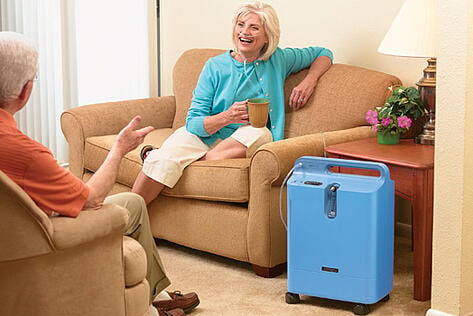Defining a Stationary Oxygen Concentrator
How stationary, also known as home oxygen concentrators, work is by simply taking air that is present in the room and filtering it to produce medical grade oxygen.
The air we all breathe is 79% nitrogen and 21% oxygen, the stationary concentrator sends the ambient air through the sieve beds to produce medical grade oxygen (93% +/- 3%).
The medical oxygen is then delivered through a tubing device that you attach to the machine, this can either be a nasal cannula or oxygen mask depending on what your doctor recommends.
The Basic Parts of a Home Oxygen Concentrator
Home oxygen concentrators are evolving with new technology, so some parts may vary depending on the machine but the basic operational parts remain the same, including: motor mounts, compressors, capacitors, a cooling fan, sieve beds and a gross-particle air filter.
These core parts of the machine help it turn outside air into medical grade oxygen, removing nitrogen and other elements from the air.
How a Home Oxygen Concentrator Works
Similar to an air conditioning unit, an oxygen concentrator takes in air from outside, purifies it and then supplies it to the user.
More specifically, oxygen concentrators pull in air from its surroundings, compresses the air, removes nitrogen and other elements from the air with sieve beds and then supplies the medical grade oxygen to the user through cannula or a mask.
The cooling mechanism we mentioned earlier is used to keep the unit cool while this process occurs, as continuous use can overheat the machine without it.




